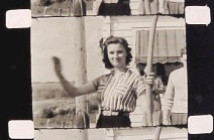A selection of recent documentary titles that feature home movies
The Center for Home Movies encourages film programmers to show these titles during the month of October, as we celebrate Home Movie Day and the history of amateur filmmaking.
Amateur Night: Home Movies From American Archives
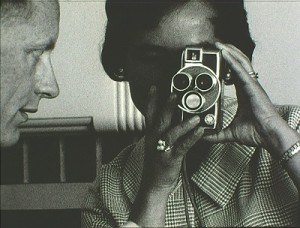
Year: 2011
Director: Dwight Swanson
Country: USA
Length: 84 min.
Website: www.amateurnightmovie.com
Trailer: vimeo.com/21623741
IMDB: www.imdb.com/title/tt1813152
Print/Video availability: 35mm and DVD (additional video formats available upon request)
Print/Video source: Producer: swanson@centerforhomemovies.org
Home availability: Vimeo (free streaming) vimeo.com/214114256
Synopsis:
Dramatic, funny, poignant and even strange, AMATEUR NIGHT presents 16 amateur films from the collections of American film archives. A project of the Center for Home Movies, this groundbreaking compilation pieces together family moments, historical scenes, animation, drama, comic routines and travelogues dating from 1915 to 2005, demonstrating the eclectic array of entertainment, innovation and enlightenment found in home movies. Featuring films by average Joes alongside notables like Alfred Hitchcock, Richard Nixon, animator Helen Hill and Smokey Bear, AMATEUR NIGHT adds to the images archival audio, commentaries from family members, and newly-recorded music. Blown-up from the original reels to 35mm, Amateur Night is a feature length big screen journey into the eclectic past of small-gauge filmmaking. The films chosen highlight some of the preservation efforts that have been undertaken by America’s film archives. The past decade has seen a flourishing of collecting, studying and viewing of home movies, especially by archives that focus on regional media collections. Scholars and filmmakers have increasingly gone into the archives to view home movies and amateur films to reach a new understanding of American culture and filmmaking.
Capturing the Friedmans
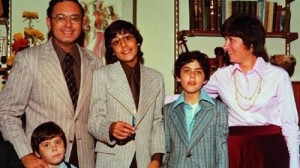
Year: 2003
Director: Andrew Jarecki
Country: USA
Length: 107 min.
Website: www.capturingthefriedmans.com
Trailer: www.moviefone.com/movie/capturing-the-friedmans/14415/video/capturing-the-friedmans-trailer/1114385
IMDB: www.imdb.com/title/tt0342172
Print/Video availability: 35mm and DVD
Print/Video source:
US Nontheatrical Distributor – Magnolia Pictures, Neal Block, nblock@magpictures.com
Home availability: Netflix DVD, Amazon DVD and streaming, iTunes (rental and purchase)
Synopsis:
CAPTURING THE FRIEDMANS is a non-fiction feature film that explores the elusive nature of truth through the prism of one of the strangest criminal cases in American history. The Friedmans seem at first to be a typical family. Arnold Friedman is an award-winning schoolteacher, his wife Elaine, a homemaker. Together, they raise their three boys in the affluent Long Island town of Great Neck. One Thanksgiving, the family is gathered at home preparing for a quiet holiday dinner. In an instant, a police battering ram splinters the front door and officers rush into the house searching every corner, seizing boxes of the family’s possessions. Arnold and his 18-year old son Jesse are both arrested, and subsequently indicted for hundreds of shocking crimes. The film follows their story – from the public’s perspective and, most remarkably, through unique footage of the family in crisis, shot contemporaneously by family members inside the Friedman house.
Dad’s in Heaven with Nixon
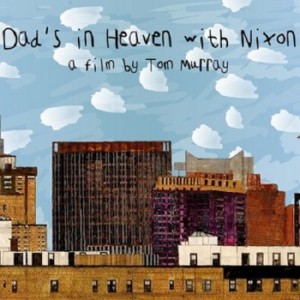
Year: 2010
Director: Tom Murray
Country: USA
Length: 86 min.
Website: inheavenmovie.com
Trailer: www.youtube.com/watch?v=weNpArkJpIA
IMDB: www.imdb.com/title/tt1469273
Print/Video availability: DVD
Print/Video source: Two Sons Productions, 310-200-1400, tom@twosons.com
Home availability: Netflix streaming, Amazon DVD and streaming, iTunes (rental and purchase),
DVD
Synopsis:
DAD’S IN HEAVEN WITH NIXON is the story of a mother’s enduring love and a boy’s journey from the darkness of brain damage, coupled with what would eventually be diagnosed as autism to the light that is his life today-a-s an acclaimed artist. It is also the story of mental illness in one Irish-American family, the devastating damage it caused, from one generation to the next, and ultimately the triumph of the human spirit.
When Janice Murray first saw her newborn son Christopher in a New York City hospital in 1960, she knew immediately that something was wrong. “The whites of his eyes were completely scarlet,” she said. “That’s a sign of oxygen deprivation.” The initial diagnosis confirmed her observations. It was only later that another battery of tests determined that he was also autistic. Virtually every medical expert that was consulted concluded that the prospects were bleak: Several even suggested putting Chris in an institution. But Janice refused to even consider the impossibility of reaching her son. There was something in his eyes that convinced her that there was hope for Chris, that he was more aware than he was letting on. “He never looked vacant or dull,” she said. “It was more a look of bewilderment or pain.” At the same time that Janice was embarking on that daunting challenge, her husband Tommy Sr. was beginning a long, sad slide into depression, debt and divorce that devastated his family. He died young, drowning off the Southampton, NY beach where he and all of his children grew up. He was 52. Like his father before him, he was bipolar and refused to even discuss being treated for it–never mind actually take the first step in that direction. Christopher was devastated by his father’s death, but couldn’t express his pain, confusion, grief and, yes, rage the way his mother, brothers and sisters could. He had to find another way-through his paintings, primarily of New York City’s urban landscape, work that is created, in the words of one critic, “with obsessive, fastidious draftsmanship.”
The film is also about the beautiful irony that now exists in Chris’ relationship with his brother Tommy, one that obliterates a commonly held belief that people with a mental illness are so much “different” than we “normal” people are: In the early days, when he was just a little boy, Tommy nurtured and sheltered Chris from the cruelties of the world and those who didn’t understand or would mock him and his condition.
“Every family has a story–and usually those stories are, at the very least, wrenching, if not tragic. And they have a profound effect on the husbands and wives and sons and daughters who are shaped by the experience. And of course our connection to that painful and oftentimes informative past is through home movies, which invariably capture images that make us laugh, or cry and most of all remember a time when life seemed–what’s the word?–clearer, easier, less complicated.
“At its core my film was really a 90-minute home movie, bolstered by images that were recorded by my grandfather in the late 20s and 30s and my dad in the 50s, 60s and 70s: Fleeting glimpses of two generations of my family, spanning 60 years. And when I found the old box containing over 60 canisters of 16mm film of my father as a little boy and his father in the years before his death from alcoholism, it changed everything about the film I thought I was making.
“Those films, along with those I already intended to use from my childhood, were a revelation–heartbreaking at times–but they made me realize I had a bigger, richer and more textured story to tell. Those films not only completed my film, but in many ways they completed me–not only as a filmmaker, but as a son trying to make sense of his legacy. And for that I will always be grateful–to both my dad and my grandfather. I tried to tell my story with empathy, understanding and compassion and I like to think they’d be as pleased with the result as everyone else.” — Tom Murray, 2012
Discoveries of a Marionette [Marionettens oppdagelser]
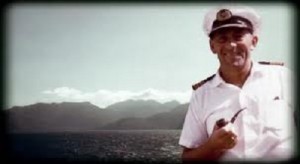
Year: 2009
Director: Bjarte Mørner Tveit
Country: Norway
Length: 73 min.
Website: piraya.no/#/films/discoveries-of-a-marionette
Trailer: www.youtube.com/watch?v=1T0msHJlaUk (opening sequence)
IMDB: www.imdb.com/title/tt1718770
Print/Video availability: HDCam, BetaCam, Blu-ray and DVD
Print/Video source: mail@kudosfamily.com
Home availability:
www.snagfilms.com/films/title/discoveries_of_a_marionette(free streaming), Amazon DVD (NTSC and PAL) and streaming
Synopsis:
There has always been a distance between director Bjarte Mørner Tveit and his grandfather, the strong patriarch Alf Mørner. However, the gap between the generations is perhaps about to close when old Alf presents a strange gift to Bjarte; countless metal cans containing 8mm film from Alf’s life and his journeys around the world. The films open a hidden universe of grandfather’s past to Bjarte, and while looking at the films he discovers stories that had remained hidden for up to seventy years. But strings were attached to the seemingly generous gift and Bjarte soon has to embark on a demanding voyage of his own. DISCOVERIES OF A MARIONETTE is a poetic and peculiar documentary film. It alters between entertaining or heartbreaking personal episodes and philosophical reflections on eternal matters. Through the film Alf Mørner leads us on a weird and wonderful expedition through life and death, love and hate, over the sea and in the end: into eternity. Nothing less.
For Memories’ Sake
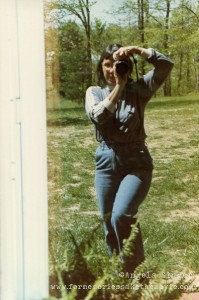
Year: 2010
Director: Ashley Maynor
Country: USA
Length: 29 min.
Website: www.ashleymaynor.com/#/for-memories-sake
Trailer: vimeo.com/6059187
IMDB: NA
Print/Video availability: DVD, mini-DV, digital files, DigiBeta
Print/Video source: Producer – amaynor@gmail.com
Home availability: https://bittersoutherner.com/for-memories-sake
Synopsis:
FOR MEMORIES’ SAKE investigates the life and work of Angela Singer, a Southern homemaker and grandmother who has taken an average of a dozen photos a day for the last 35 years, compiling a mysterious and strange archive of over 150,000 photographs of her daily life. In this half-hour documentary, Angela Singer’s life and hobby of photography is explored through the lens of her granddaughter, filmmaker Ashley Maynor. As the film investigates one Southern homemaker’s obsession with the photographic image, it asks questions about photography as a form of memory and captures a cross-generational portrait of two Southern women whose lives as image-makers have taken very different paths. While the film largely tells the story of one homemaker and photographer, Angela’s images speak, however incompletely, for the countless other women of her generation whose lives of pain, happiness, and searching in the rural South have rarely been documented.
For One More Hour With You [Un’ora sola ti vorrei]
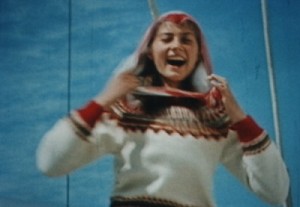
Year: 2002
Director: Alina Marazzi
Country: Italy
Length: 55 min.
Website: mircinema.com/scheda-film.php?id=11
Trailer: www.youtube.com/watch?v=mVzCJplGRoo
IMDB: www.imdb.com/title/tt0329468
Print/Video availability: DVD, Betacam SP (English subtitles)
Print/Video source: info@mircinema.com
Home availability: Pay download www.realeyz.tv/en/noch-eine-stunde-mit-dir.html
Synopsis:
When Italian filmmaker Alina Marazzi was seven years old, her mother Luisa Marazzi Hoepli committed suicide after a brief and intense bout with depression. Marazzi tried to grasp the meaning of her mother’s life and death 30 years later through film footage shot during her mother’s life mixed with readings from her mother’s diary in the young director’s 2002 film FOR ONE MORE HOUR WITH YOU (UN’ORA SOLA TI VORREI). Born to a wealthy Milanese family involved in the Italian publishing industry, young Luisa Marazzi Hoepli is revealed through her own journal entries, as well as film footage shot over the years by her father Ulrico Hoepli, to have been a vivid and well-educated young woman. Growing into a young woman, Luisa wrote about her perceptions of her existence as she later married and gave birth to three children. But tragically, Luisa was admitted to a Swiss psychiatric hospital to combat depression and committed suicide shortly thereafter at the age of 33.
“My mother was born in 1938 and died in 1972, when I was 7 years old. I do not have many memories of her, but I always knew that in a closet in my grandparents’ house was locked up all the visual memory of our family. In this cabinet are stored boxes of old film footage shot by my mother’s father between 1926 and 80s, with a 16mm amateur camera. It was just a few years ago I had the courage to start looking at these movies, with great curiosity and excitement, especially those marked with an ‘L’, the initial of my mother’s name: Liseli. As though by magic, in a moment, that mysterious and unknown person projected on the screen in front of me was as if she were alive. In a second I was catapulted into the past, a mother living at the time little known and often neglected…Through these texts, it is possible to reconstruct its entire life in its various periods: adolescence, love, children, illness, existential unease.” — Alina Marazzi, 2002
I For India
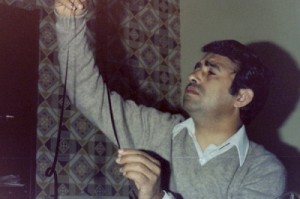
Year: 2005
Director: Sandhya Suri
Country: UK/Italy/Germany
Length: 70 min.
Website: www.iforindiathemovie.com
Trailer: www.youtube.com/watch?v=9RaGw3IDHwQ
IMDB: www.imdb.com/title/tt0490984
Print/Video availability: DVD and BetaSP (U.S.), DigiBeta (PAL and NTSC)
Print/Video source: U.S.: Icarus Films, rentals@icarusfilms.com
Europe: Tamasa Distribution, contact@tamasadiffusion.com
Filmmaker: sandalssuri@hotmail.com
Home availability: None
Synopsis:
In 1965 Yash Pal Suri left India for the U.K. The first thing he does on his arrival in England is to buy 2 Super 8 cameras, 2 projectors and 2 reel to reel recorders. One set of equipment he sends to his family in India, the other he keeps for himself. For forty years he uses it to share his new life abroad with those back home – images of snow, miniskirted ladies dancing bare-legged, the first trip to an English supermarket – his taped thoughts and observations providing a unique chronicle of the eccentricities of his new English hosts. Back in India, his relatives in turn respond with their own ‘cine-letters’ telling tales of weddings, festivals and village life. As time passes and the planned return to India becomes an increasingly remote possibility, the joy and curiosity of the early exchanges give way to the darker reality of alienation, racism and a family falling apart. A bitter-sweet time capsule of alienation, discovery, racism and belonging, “I for India” is a chronicle of immigration in sixties Britain and beyond, seen through the eyes of one Asian family and their movie camera.
Looking for Larisa (Buscando a Larisa)

Year: 2012
Director: Andrés Pardo Piccone
Country: Mexico
Length: 78 min.
Website: vimeo.com/k3films
Trailer: vimeo.com/16683321
IMDB: www.imdb.com/title/tt2300817
Print/Video availability: Digital, BluRay, DCP
Print/Video source: K3 Films, k3_films@mac.com
Home availability: Vimeo On Demand, Amazon streaming
Synopsis:
Drawn from more than 2,000 feet of Super-8 film home movies shot between 1970 and 1980, purchased at a Mexican flea market 30 years later by director Andres Pardo. In screening the reels, he finds episodes of the childhood of the charming and expressive Larisa filmed by her father, and stumbles onto the story of a family that somehow becomes disconnected from its memories. The filmmaker teams up with photographer Santiago Cassarino to create a documentary that searches for answers and ultimately, Larisa. — Guadalajara Reporter
Miss Universe 1929: Lisl Goldarbeiter. A Queen in Wien
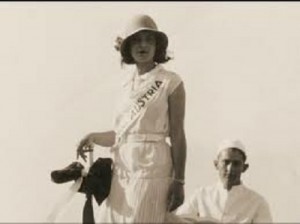
Year: 2006
Director: Péter Forgács
Country: Hungary/Netherlands/Austria
Length: 70 min.
Website: www.forgacspeter.hu/english/films/Miss+Universe+1929/2
Trailer: vimeo.com/1463170
IMDB: www.imdb.com/title/tt0846784
Print/Video availability: BetaSP (PAL), DigiBeta (PAL+NTSC)
Print/Video source: sales@lumenfilm.demon.nl
Home availability: None
Synopsis:
Lisl Goldarbeiter’s cousin, amateur filmmaker Marci Tenczer came from Szeged. He studied in Vienna, where he saved even his money for the tram to buy a camera and film and to pursue from time to time his passion for making films. It is through him that this bittersweet twentieth-century Austro-Hungarian life and family story has come down to us. Lisl, who grew up in Vienna in modest circumstances, first won the title of Miss Austria in 1929 at the Austrian beauty contest, finishing ahead of 600 other contestants. She finished second at the Miss Europe beauty contest in Paris, where the first Hungarian beauty queen, Böske Simon won. That year the beauty queens of the world set sail to the United States to compete against the American beauties in Texas. This is where Lisl was voted the first Miss Universe by a unanimous decision of the jury! Lisl, now suddenly world famous, received various invitations and an offer from Hollywood, and her company was sought after by many celebrities. She traveled extensively and, having rejected numerous suitors, finally married Fritz Spielmann, heir to a silk necktie fortune in Vienna. Marci Tenczer faithfully recorded it all on film. These golden years in Vienna came to an end when Hitler’s Germany annexed Austria. They lost nearly everything in the war, and the adventure of suffering and life continued.
“The reason why I was up to collect home movies was the distorted, censored and destroyed past and the inconsistent continuity of traditions and history. Let’s say it was more a psycho-historical imprint I was looking for than regular observing the past, or a sentimental journey. My terrain is the non-official visual imprint of my culture and I soon realized this image collection might represent something new and fill some of the gaps of the vast, destroyed and lost past.” — Péter Forgács, Art Margins
Must Read After My Death

Year: 2007
Director: Morgan Dews
Country:USA
Length: 70 min.
Website: www.mustreadaftermydeath.com/MRAMD/home.html
Trailer: www.youtube.com/watch?v=SDT29NoV-RM
IMDB: www.imdb.com/title/tt1249414
Print/Video availability: DVD
Print/Video source: Gigantic Digital Cinema, info@giganticreleasing.com
Home availability: Amazon DVD, iTunes (rental and purchase), DocAlliance (streaming and download), Europe dafilms.com/film/7729-must-read-after-my-death
Synopsis:
Filmmaker Morgan Dews was very close to his grandmother Allis, but it wasn’t until after her death in 2001 that he became aware of an astounding archive she’d amassed throughout the 1960s. Filled with startlingly intimate and candid audio recordings detailing her family’s increasingly turbulent lives, the collection also contained hundreds of silent home movies, photographs and written journals. Using only these found materials, Dews has fashioned a searing family portrait that affords fly-on-the-wall access to one family’s struggles amid an America on the verge of dramatic transformation. MUST READ AFTER MY DEATH follows Allis, her husband Charley and their four children in Hartford, Connecticut. Charley’s work takes him to Australia four months each year, so the couple purchases Dictaphone recorders as a way to stay in touch throughout Charlie’s extended absences. A modern woman at least a decade ahead of her time, Allis struggles against conformity – against the conventional roles of wife and mother. She finds the recordings cathartic and, with the family’s cooperation, incorporates them into their everyday existence. When the family turns to psychologists and psychiatrists, their strife increases and the recordings turn progressively darker – even desperate. All the while, Dews employs the family’s many home movies and the seemingly placid, typically American façade that they convey, as visual counterpoint to the raw and sobering tape recordings.
“What I find compelling about using home movies to construct narratives is that it pushes you into an approach much like the 20th century autobiographical novel. You’re taking material that is analogous to diaries in a way, and massaging it into a narrative arc. The more explicit truths you want to get at, the more you have to change names and details in order to protect your friends and family. There are also ideas about authenticity. I turn off the camera when my friends start to scream or cry, so you lose direct dramatic situations. But there is an honesty about home footage or documentary. People aren’t pretending the camera isn’t there, they aren’t pretending to be someone else, they are there with you filming and to some extent with the viewer viewing. There’s also something to be said for the long arc in home footage. My grandparents filmed for 20 years of their lives. I have been too. Things really change over that span of time that are really hard to fake.” — Morgan Dews, Home & Amateur
My Perestroika
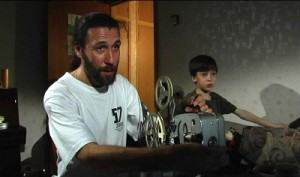
Year: 2010
Director: Robin Hessman
Country: USA
Length: 88 min.
Website: myperestroika.com
Press kit: myperestroika.com/pdf/MYPERESTROIKA_presskit.pdf
Trailer: www.youtube.com/watch?v=fo28TARm1d4
IMDB: www.imdb.com/title/tt1557720
Print/Video availability: DCP, Blu-Ray, HDCam, DigiBeta, DVCam and DVD.
Print/Video source: info@myperestroika.com
Institutional DVD sales: www.newday.com/films/myperestroika.html
Home availability: Amazon DVD, Netflix, iTunes, shop.indieblitz.com/myperestroika
Synopsis:
When the USSR broke apart in 1991, a generation of young people faced a new realm of possibilities. An intimate epic about the extraordinary lives of this last Soviet generation, Robin Hessman’s feature documentary debut tells the stories of five Moscow schoolmates who were brought up behind the Iron Curtain, witnessed the joy and confusion of glasnost, and reached adulthood right as the world changed around them. Through candid first-person testimony, revealing verité footage, and vintage home movies, Hessman, who spent many years living in Moscow, reveals a Russia rarely ever seen on film, where people are frank about their lives and forthcoming about their country. Engaging, funny, and positively inspiring, in MY PERESTROIKA politics is personal, honesty overshadows ideology, and history progresses one day, one life at a time.
“I spent hours in the state film archive outside of Moscow watching newsreels of the 1970s and ‘80s. I began to interview dozens of 30-somethings from all walks of life. I thought about how to bring the personal, intimate and human aspects of life in the USSR alive for a Western audience. I searched for home movies of the period. Unlike the Soviet and Western propaganda, they are without an agenda. Part of their beauty is the purity of their intention – to preserve family memories for later generations. There is no better way to gain an intimate view of the past.” — Robin Hessman, 2010
Our Nixon

Year: 2013
Director: Penny Lane
Country: USA
Length: 84 min.
Website: www.ournixon.com
Trailer: www.youtube.com/watch?v=odTZDplswDg
IMDB: www.imdb.com/title/tt2282662/
Print/Video availability: DCP, BluRay, digital file, DVD
Print/Video source:
US distributor: Cinedigm, Tom Hassell (thassell@cinedigm.com) & Alfredo Aja (aaja@cinedigm.com)
International distributor: Autolook Film Sales, Youn Li (youn@autlookfilms.com)
Home availability: iTunes (rental and purchase), DVD (2014 release)
Synopsis:
Throughout Richard Nixon’s presidency, three of his top White House aides obsessively documented their experiences with Super 8 home movie cameras. Young, idealistic and dedicated, they had no idea that a few years later they’d all be in prison. This unique and personal visual record, created by H.R. Haldeman, John Ehrlichman and Dwight Chapin, was seized by the FBI during the Watergate investigation, then filed away at the National Archives, and forgotten for almost 40 years. OUR NIXON is an all-archival documentary presenting those home movies for the first time, along with other rare footage, creating an intimate and complex portrait of the Nixon presidency as never seen before.
Haldeman, Ehrlichman and Chapin filmed over 500 reels of home movies from 1969 to 1973, capturing the prosaic and the profound. They filmed big events: the Apollo moon landing, historic anti-war protests, the Republican National Convention, Tricia Nixon’s White House wedding and Nixon’s world-changing trip to China. They filmed world leaders and celebrities: Nicolae Ceausescu, Chou En-lai, Barbara Walters. But they also filmed each other and everyday life: Ehrlichman eating dinner off a tray on Air Force One, Chapin’s wife and kids meeting the Easter Bunny on the White House lawn, Haldeman riding a bicycle at Camp David. Ehrlichman was especially fond of filming hummingbirds.
They filmed to have something to show their grandchildren. They filmed because they thought that Nixon’s presidency would change the world forever. The tragedy is that they were right.
El Perro Negro: Stories from the Spanish Civil War
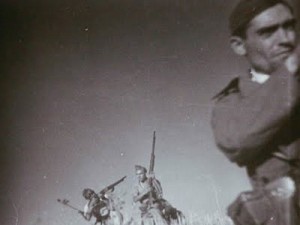
Year: 2005
Director: Péter Forgács
Country: Hungary/France/Netherlands
Length: 84 min.
Website: www.forgacspeter.hu/english/films/El+Perro+Negro/3
Trailer: vimeo.com/1462841
IMDB: www.imdb.com/title/tt0457333
Print/Video availability: BetaSP (PAL+NTSC), DigiBeta (PAL+NTSC), HD (PAL+NTSC)
Print/Video source: sales@lumenfilm.demon.nl
Home availability: None
Synopsis:
EL PERRO NEGRO takes a cliché-breaking view of the Spanish Civil War through a mesmerizing found footage collage. The saga begins in 1929 with the talented amateur filmmaker, Joan Salvans, son of a wealthy Catalan industrialist, of Terrassa. The Salvans were the object of admiration as one of the most successful wool manufacturer of Catalonia, but also of hatred by the emerging anarchists and socialist trade unionists. On 24 July 1936, six days after the Civil War broke out, a militant anarchist group led by ‘Pedro el Cruel’ kills Joan Salvans, filmmaker, and his father Francesc Salvans. A cyclist, not far from their house, finds their bodies. Just about the same time when Joan’s life unfortunately ends, a new saga of the other young clandestine filmmaker, Ernesto Noriega, picks up the story line to guide us through his adventures. He is arrested and almost executed, but luckily survives and secretly films the prison on his way to Madrid. The twentieth century saw an unprecedented vitality of the Spanish spirit, but also an unpredictably sharp conflict between old and new, developed North and feudal South. What drove the anarchist ‘Pedro el Cruel’ to murder Salvans? And why did the Spanish army revolt against the Republic? While searching for answers we travel through Spain’s chaotic decade with the images and stories of several amateur filmmakers and their memories focusing on all sides of the front like republicans, anarchists, Communist, and the foreigner Brits, Germans, Italians, Americans, who fought on both sides.
Private Century [Soukromé století]
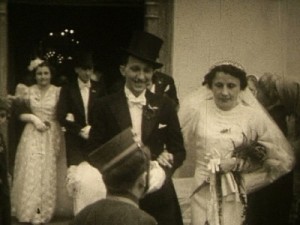
Year: 2006
Director: Jan Sikl
Country: Czech Republic
Length: 416 min. (8 x 52 min.)
Website: www.facets.org/privatecentury
Trailer: www.youtube.com/watch?v=-FrY5XT2cC8
IMDB: www.imdb.com/title/tt1068788
Print/Video availability: DigiBeta, DVD
Print/Video source: Abbey Rose, Facets, abbey@facets.org
Home availability: Available through Facets Video, Netflix DVD, Amazon DVD
Synopsis:
This remarkable eight-part series tells the stories of ordinary Czech citizens caught in the wheels of history. Composed entirely of home movies, still photographs, letters, and diaries dating from the 1920s to 1960s, PRIVATE CENTURY explores the impact of sweeping historical events–war, economic depression, and government interference–on the private lives of regular people. In the midst of political turbulence and social change, they grow up, fall in love, get married, go on vacation, and so on. Major turning points in 20th-century Czechoslovakia provide the historical backdrop, but the problems, pleasures, and pain of the people in each episode are universal in nature. In Czech with English subtitles.
Tarnation
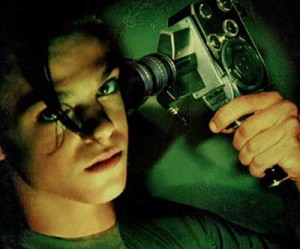
Year: 2003
Director: Jonathan Caouette, 2003
Country: USA
Length: 88 min.
Website: NA
Trailer: www.youtube.com/watch?v=mLDQL23nutw
IMDB: www.imdb.com/title/tt0390538/
Print/Video availability: DVD, 35mm
Print/Video source: New Yorker Films, nontheatrical@newyorkerfilms.com , 1-877-247-6200
Home availability: Netflix DVD, Amazon DVD
Synopsis:
Jonathan Caouette’s spellbinding debut TARNATION reimagines the whole idea of what a documentary can be. Caouette has been documenting his life since he was eleven years old. With Tarnation, he weaves a psychedelic whirlwind of snapshots, Super-8 home movies, answering machine messages, video diaries, early short films, snippets of 80s pop culture and dramatic reenactments to create an epic portrait of an American family torn apart by dysfunction and reunited through the power of love.
TARNATION begins in 2003 as Caouette learns of his mother’s lithium overdose in his native Texas. Faced with the haunting remnants of his past, including a family legacy of mental illness, abuse, and neglect, Caouette returns home to aid in his mother’s recovery. Slipping back into the archives of his youth, we watch Caouette grow up on camera, seeking escape from family trauma through musical theater, grade-B horror flicks and the forging of his identity through popular culture. Having relocated to New York in his twenties and subsequently attaining peace in the form of a supportive mate, Caouette discovers that family ties are never truly unbound. He rekindles a touching relationship with another victim of a tumultuous childhood – his own mother Renee.
The War Tapes
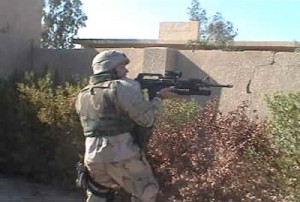
Year: 2006
Director: Deborah Scranton
Country: USA
Length: 97 min.
Website: www.thewartapes.com
Trailer: www.youtube.com/watch?v=32L-yuqpEqE
IMDB: www.imdb.com/title/tt0775566
Print/Video availability: DVD
Print/Video source: SenArt Films, info@senartfilms.com, 212-406-9610
Home availability: Netflix DVD, Amazon DVD and streaming, iTunes (rental and purchase)
Synopsis:
Straight from the front lines in Iraq, THE WAR TAPES is the first war movie filmed by soldiers themselves. Funnier, spicier, and more gut wrenching than any news report, this is Operation Iraqi Freedom as filmed by Sergeant Steve Pink, Sergeant Zack Bazzi and Specialist Mike Moriarty. Steve is a wisecracking carpenter who aspires to be a writer. Zack is a Lebanese-American university student who loves to travel and is fluent in Arabic. Mike is a father who seeks honor and redemption. Each leaves a woman behind – a girlfriend, a mother and a wife. Through their candid footage, these men open their hearts and take us on an unforgettable journey, capturing camaraderie and humor along with the brutal and terrifying experiences they face. These soldiers got the story that 2,700 embedded reporters never could.
ADDITIONAL TITLES:
The titles below is a selected list of additional experimental and documentary shorts and features that make extensive use of home movies and amateur films. We encourage you consider them in your programming schedules. This is not meant to be a definitive list, just a starting point.
51 Birch Street (Doug Block, 2005)
http://www.51birchstreet.com
Carol Anne is Dead (Michael Robinson, 2008) [short]
http://vimeo.com/8740833
Daughter Rite (Michelle Citron, 1979)
http://www.imdb.com/title/tt0216664
Dear Carry (Joel Katz, 1997)
http://www.onierafilms.com/Oniera_Films/dc_desc.html
Deep Water (Louise Osmond & Jerry Rothwell, 2006)
http://www.pbs.org/independentlens/deepwater
The Devil and Daniel Johnston (Jeff Feuerzeig, 2006)
http://www.sonyclassics.com/devilanddaniel
Dogtown and Z-Boys (Stacy Peralta, 2001)
http://www.sonyclassics.com/dogtown
Family Album (Alan Berliner, 1986)
http://alanberliner.com/flm_04.html
Family Nightmare (Dustin Guy Defa, 2011) [short]
http://www.imdb.com/title/tt2056570
Found (Sherri Larsen, 2005) [short]
http://www.youtube.com/watch?v=eu5AoWXgmyk
Going Places: Attempting an International Mobility Biography (Ruth Somalo, 2008) [short]
http://hornsandtails.com/Films.html
Her Name Is Sabine (Sandrine Bonnaire, 2007)
http://www.gosprout.org/film/sff2009/sabine.html
Hetket jotka jäivät (Y in Vyborg) (Pia Andell, 2006) [short]
http://www.imdb.com/title/tt0783731
Home Movie: An American Folk Art (Ernst Edward Star and Steve Zeitlin, 1975) [short]
http://www.folkstreams.net/film,112
Horst Buchholz – Mein Papa (Christopher Buchholz and Sandra Hacker, 2005)
http://www.saycheeseproductions.com
In the Matter of Cha Jung Hee (Deann Borshay Liem, 2010)
http://www.pbs.org/pov/chajunghee
Jäävuoren varjoon (Iceberg Shadow) (Antti Seppänen, 2007)
http://www.imdb.com/title/tt1582516
Made in China (John Heide, 2007)
http://trythisfilms.com/china.html
Magic Trip (Alex Gibney & Alison Ellwood, 2011)
http://www.magpictures.com/magictrip
My Father’s Camera (Karen Shopsowitz, 2001)
http://www.onf-nfb.gc.ca/eng/collection/film/?id=50164
Novaro, The Mexican Colossus (Novaro, El Coloso Mexicano)(Andrés Pardo Piccone, 2017)
https://vimeo.com/ondemand/novaro
Phyllis and Harold (Cindy Kleine, 2008)
http://www.phyllisandharold.com
Pieni elokuva sisaruussuhteista (The Small Story about Sibling Relations) (Pia Andell, 2001) [short]
http://www.imdb.com/title/tt1322352
Po-Lin, Slivers of Memory (Jolanta Dylewska, 2008)
http://www.imdb.com/title/tt1369552
The Real Truth About Farmer John (Taggart Siegel, 2005)
http://angelicorganics.com/ao/index.php?option=com_content&task=view&id=148&Itemid=182
Severe Clear (Kristian Fraga, 2009)
http://severeclearthemovie.com
Something Strong Within: Home Movies from America’s Concentration Camps (Robert A. Nakamura, 1994)
http://www.janm.org/mediaarts/projects/strongwithin.html
Too Soon Too Late (Adrienne Finelli, 2010) [short]
http://www.adriannefinelli.com/projects/toosoontoolate.html
Vakvagny (Benjamin Meade, 2002)
http://www.imdb.com/title/tt0324405
